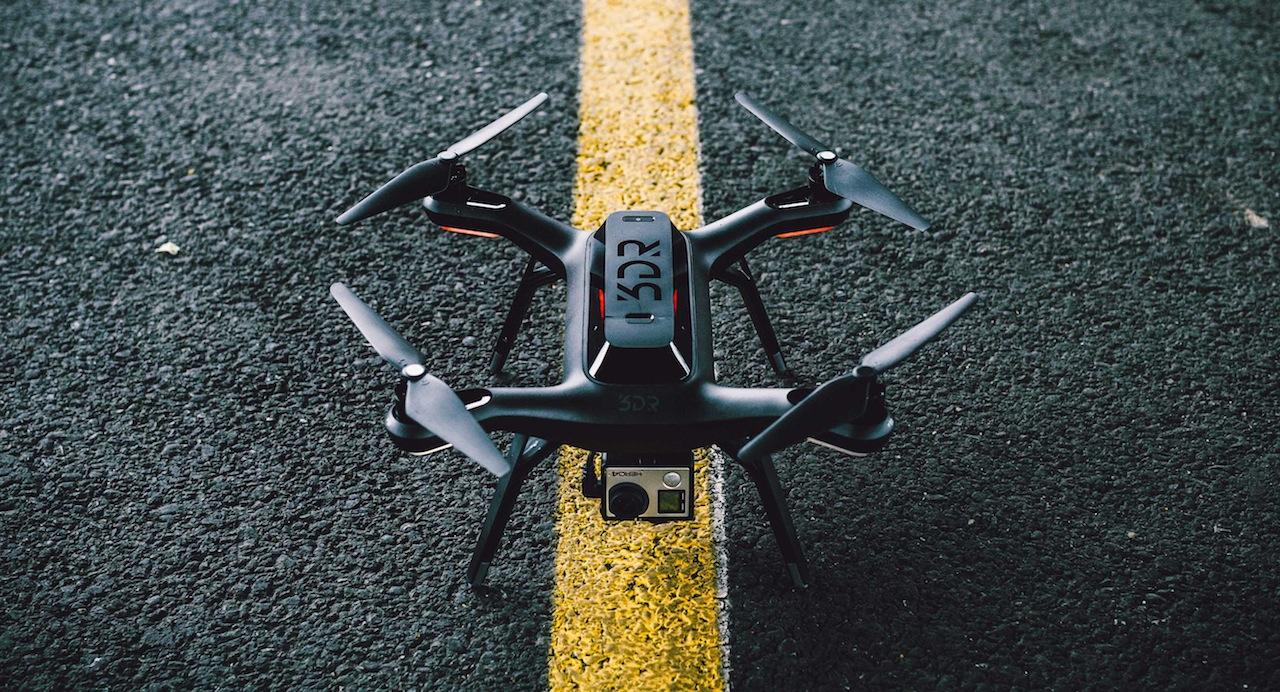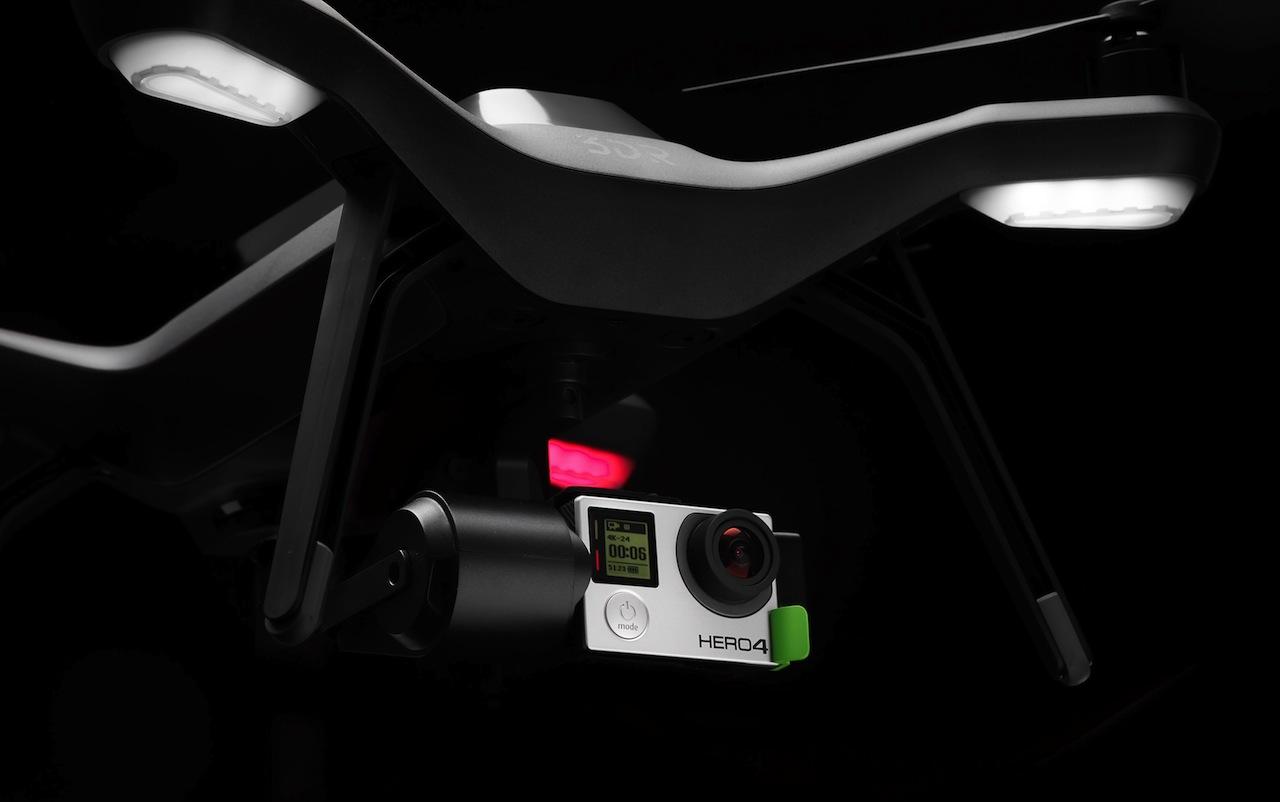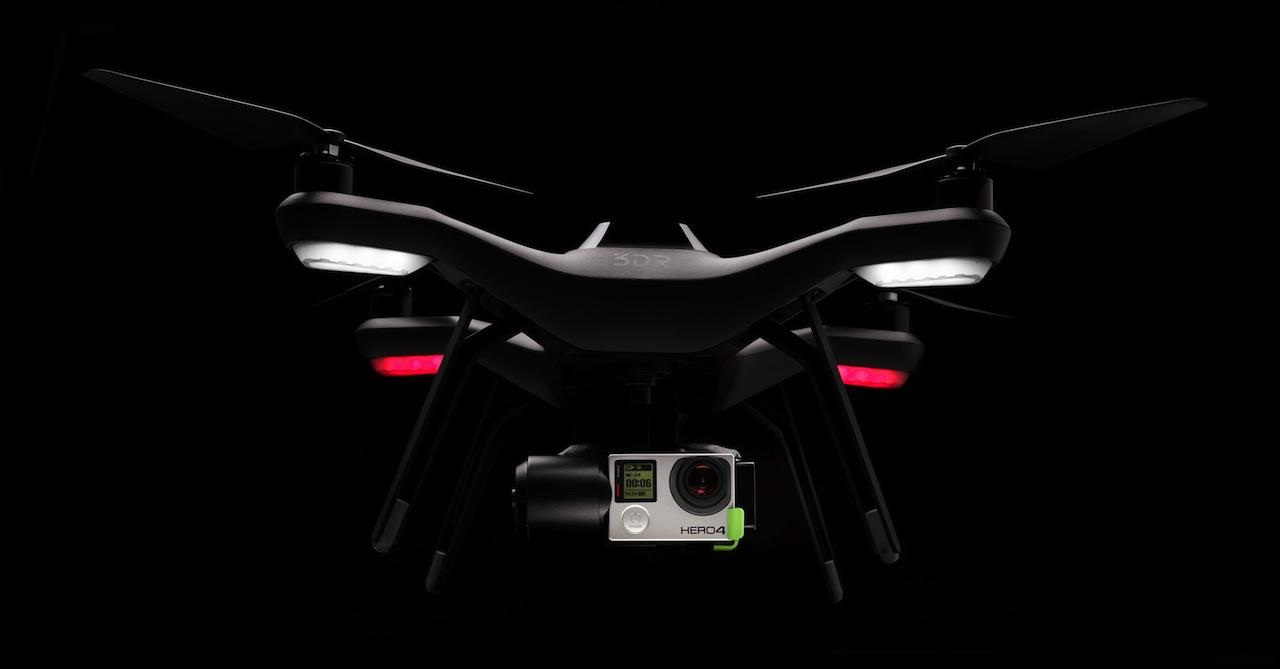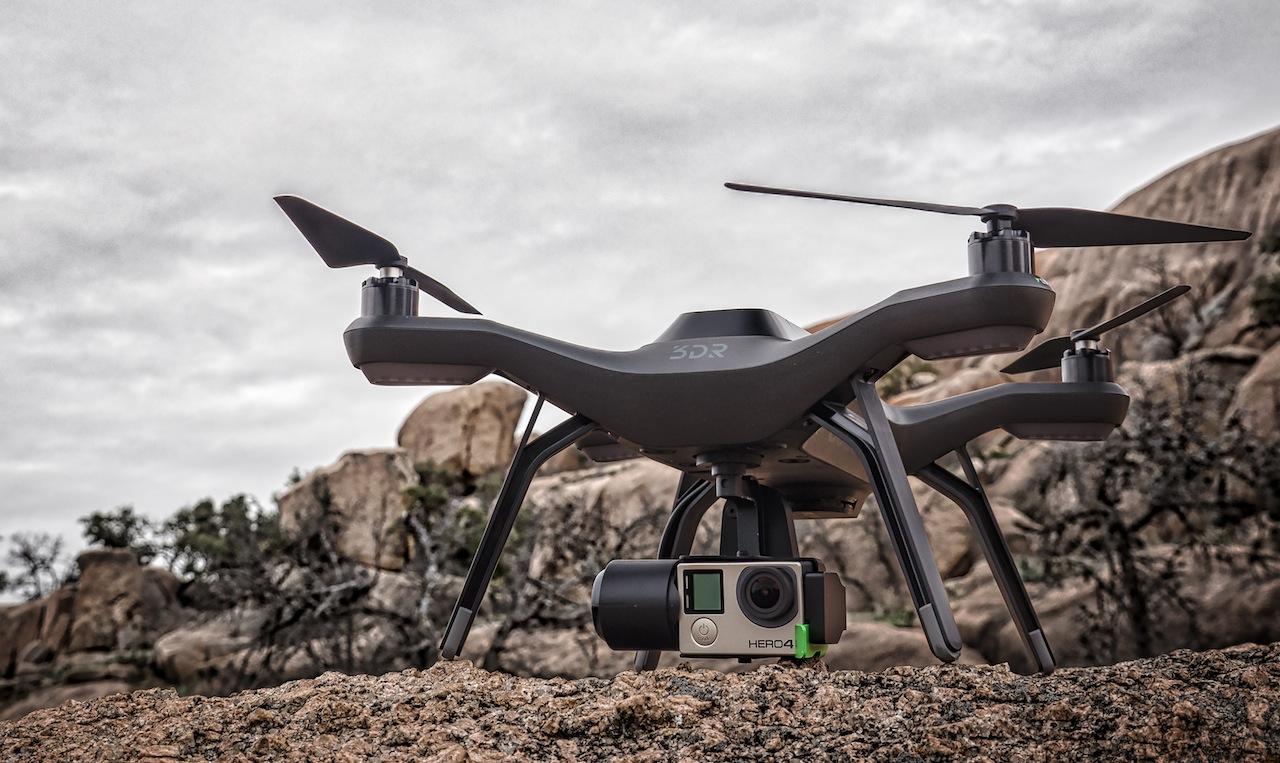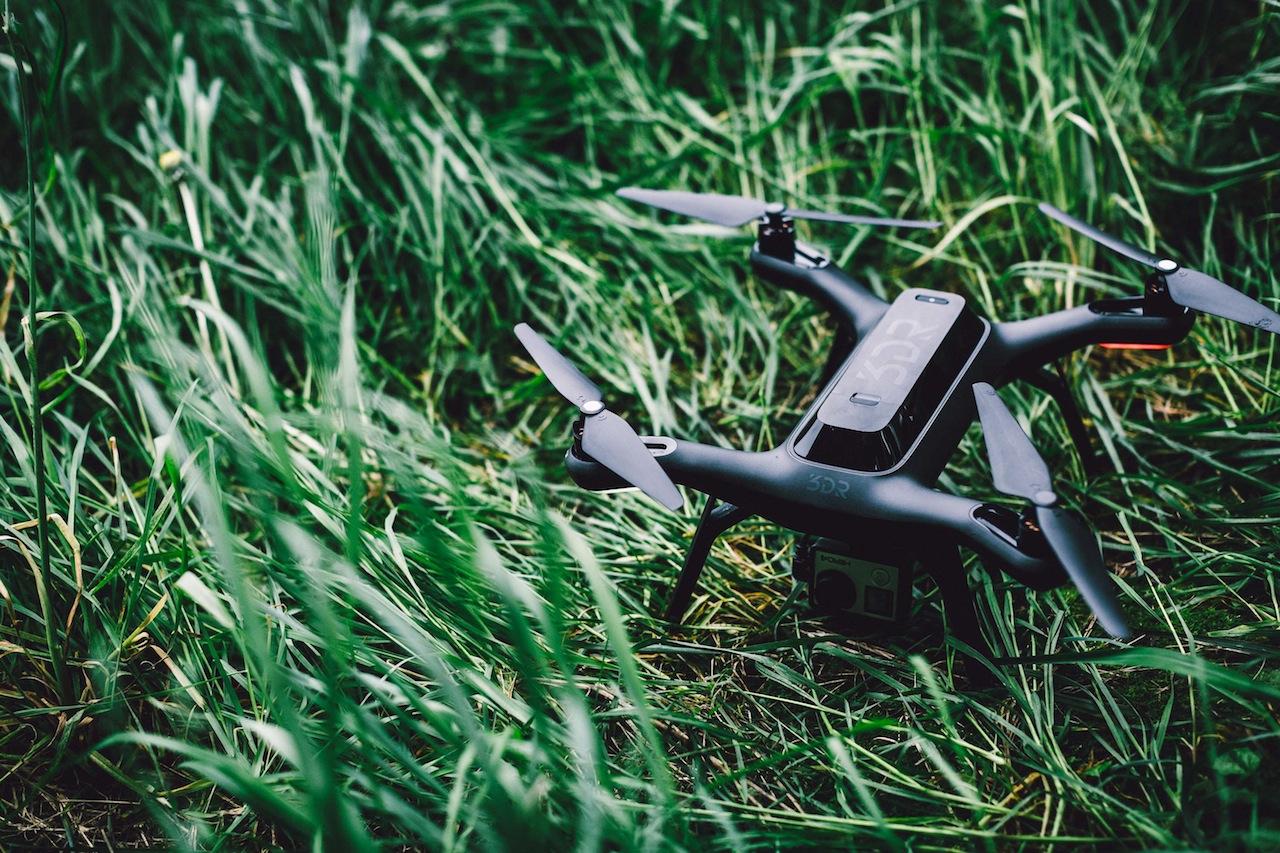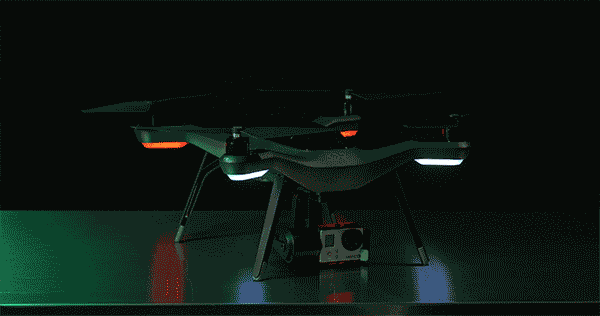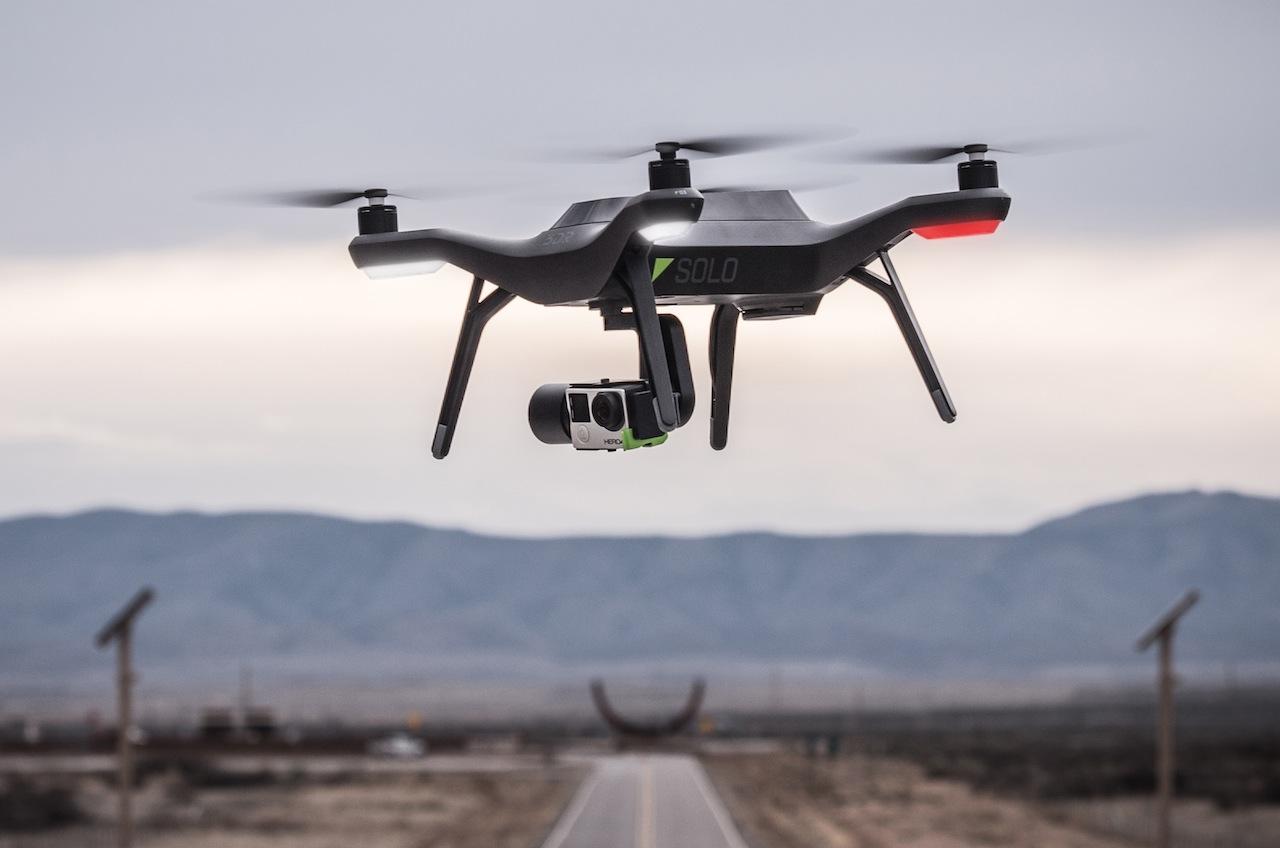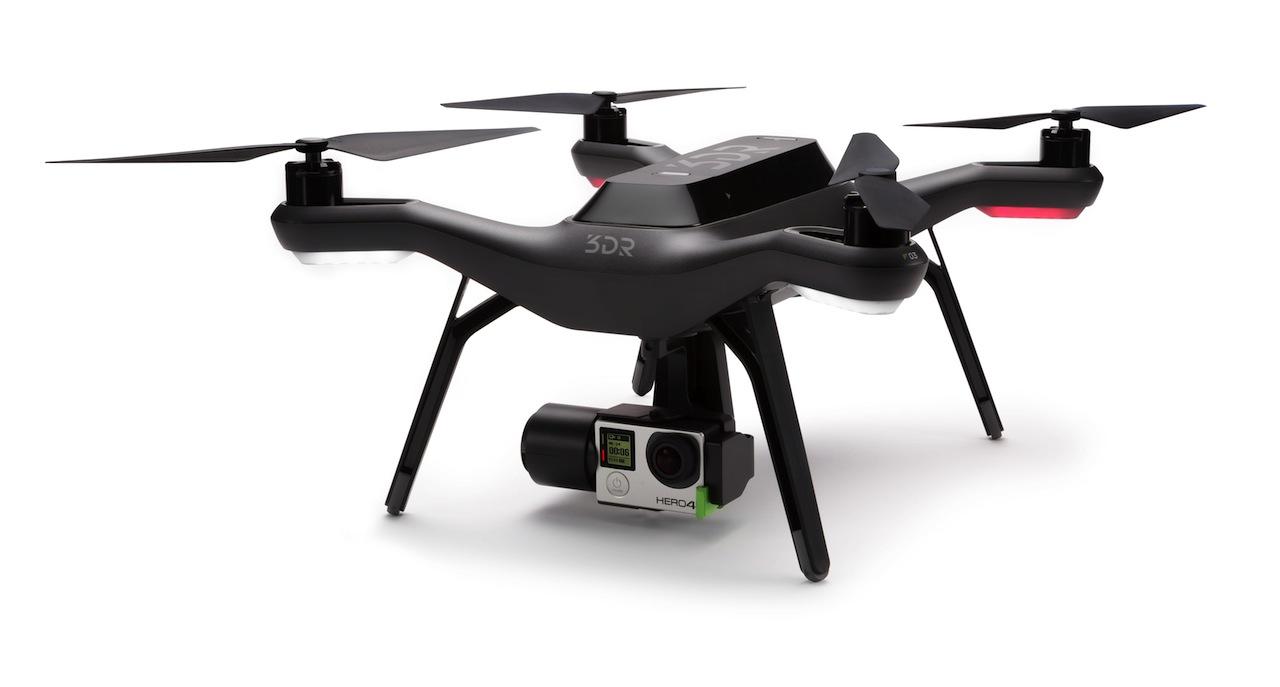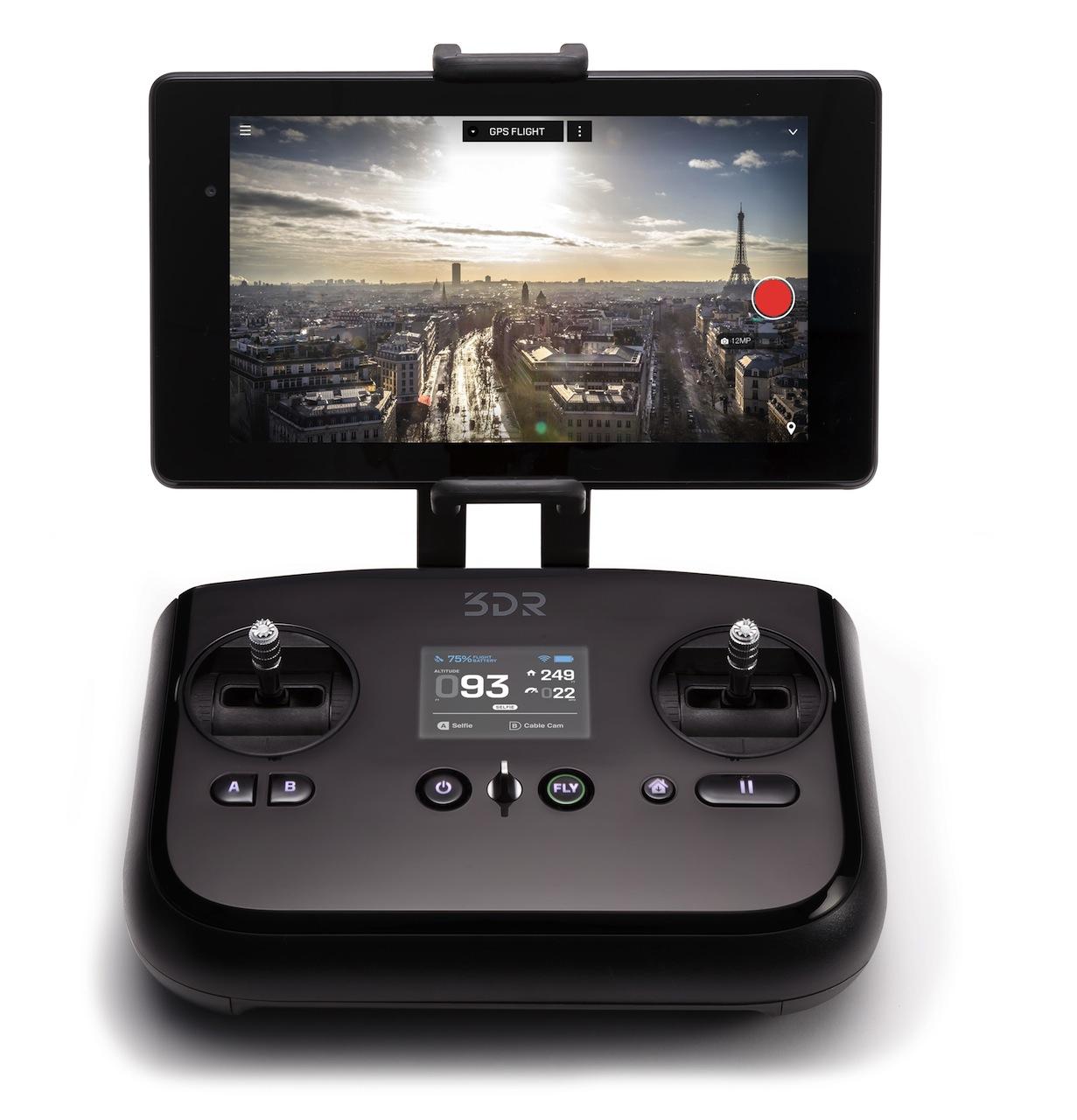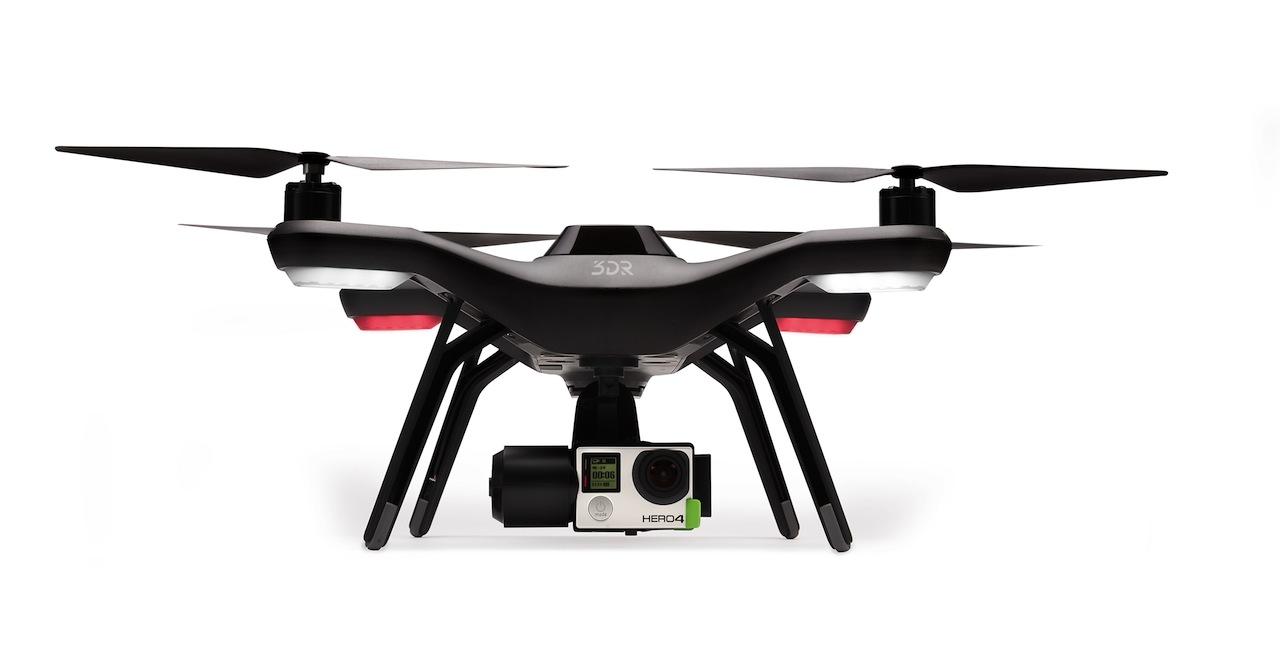3D Robotics Solo Drone Adds Autopilot For Smart GoPro Filming
3D Robotics promised a smarter drone and today we get to meet Solo, a quadcopter with the promise of easily-programmed autonomous flight and camera control, live HD streaming, and a sub-$1k price tag. While it might look like other drones, slinging a GoPro camera in an independently-maneuverable gimbal underneath, Solo's cleverness is in 3D Robotics' twin computers: one in the drone and another in the controller with its smartphone mount. Rather than having to twiddle joysticks to get your shot, however, the drone uses a combination of GPS and preprogrammed Smart Shots that should see it navigate through the air around your route of choice, filming as it goes.
For instance, a hands-off pilot could set Solo to swoop down a certain path and back, or circle a building or presenter, following preconfigured virtual tracks. During that time the camera itself can either be manually controlled or left to pan of its own accord.
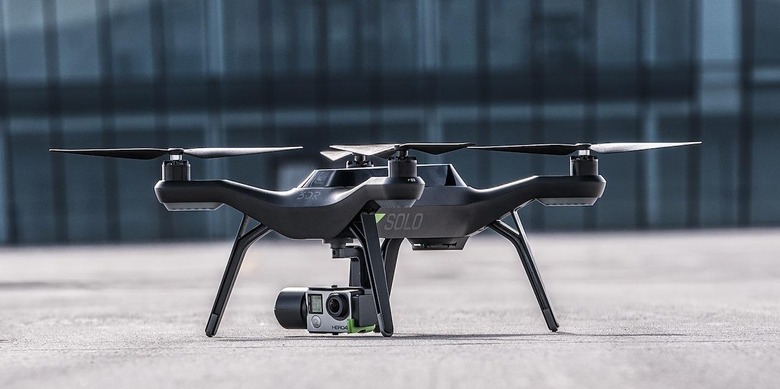
"Follow" mode tracks an individual, keeping them in frame all the time, while there's a one-touch "Selfie" that automatically records an establishing shot from the air. Flight paths are established through the iOS and Android apps, and can be run through virtually; if there's an issue while the drone is already in the air, meanwhile, a "pause" button keeps it hovering and on hold.
As for video, 3D Robotics worked with GoPro to integrate the action camera company's hardware, meaning Solo can start and stop recording, change the field of view, FPS rate, and exposure compensation, as well as other settings. A battery in the gimbal – which 3D Robotics claim is good for +/- 0.1-degrees of pointing accuracy – keeps the GoPro running.
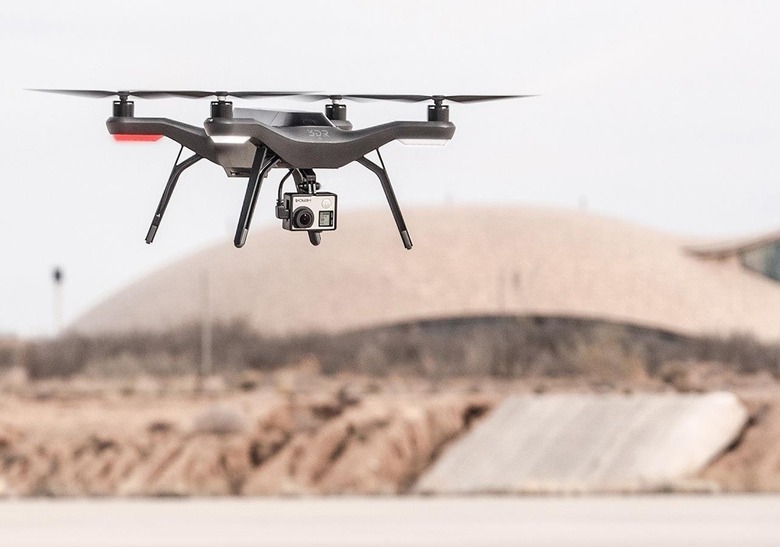
What makes the drone really interesting is that 3D Robotics will hand over as much or as little control as the pilot wants to take. If you want to fly manually, you can; alternatively, if you want to pick from a range of camera angle presets or preconfigured flight movements, you can; finally, there's a full auto mode to leave the camera to the Solo's best judgement.
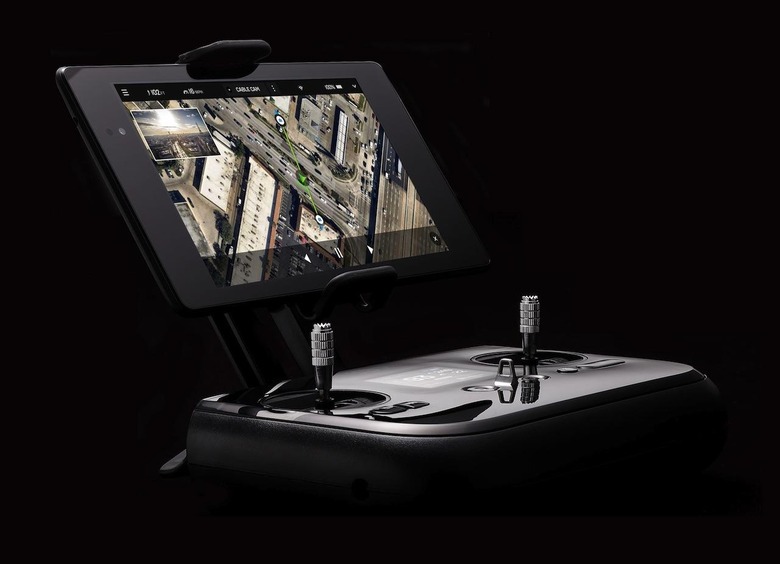
That could make it the drone of choice for those who'd like to throw some aerial photography and videography into their repertoire, but have neither time nor patience to become adept manual pilots.
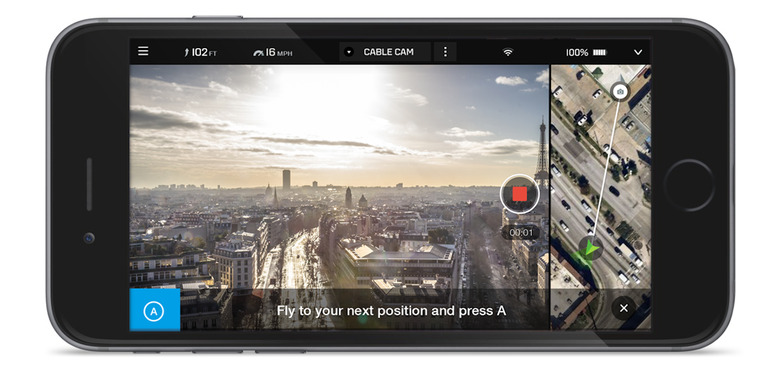
The controller has dedicated Takoff, Land, Return Home, and Pause buttons, as well as preset controls for camera positions, while an integrated display shows status including battery charge, how much flight time that translates to, camera settings, and more.
The controller also gets an HDMI output which can push up to Full HD footage to a display or recorder. 3D Robotics is promising more functionality in future.
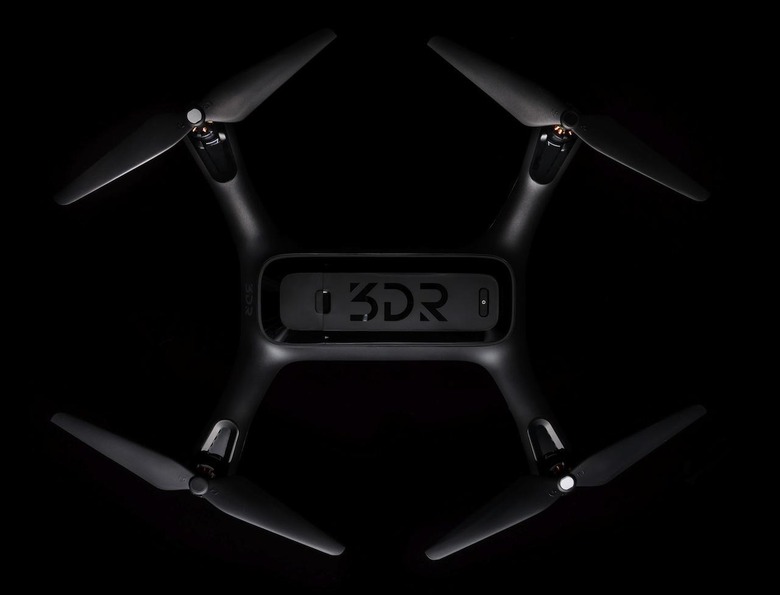
For expansion, meanwhile, there's interchangeable motor pods, a swappable gimbal bay, and an accessory bay that could be used to drop parachutes or more. On the software side, there's an open app development platform for coders to cook up their own functionality.
Flight time is up to 25 minutes without a payload, or up to 20 minutes when a GoPro and Solo Gimbal are installed. The controller will run for up to four hours on a charge, meanwhile, and both have interchangeable batteries. Video range over WiFi is up to half a mile, conditions depending, with 180ms latency.
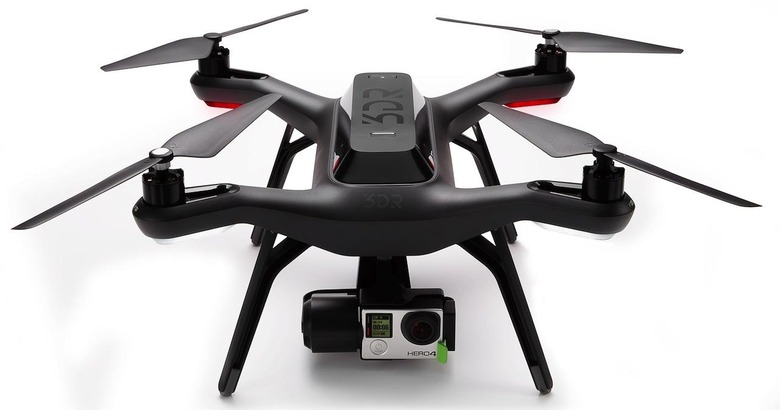
Best of all, perhaps, if you have a crash or damage due to a system error, Solo's log will record it and 3D Robotics says it will replace drone, gimbal, and GoPro, depending on what's broken.
If the autopilot technology turns out to be as straightforward to use as 3D Robotics suggests, we could one step closer to drones that only need a little artistic vision to operate, rather than demanding plenty of pilot practice. Solo is expected to begin shipping in May, priced at $999 for the drone alone, though add another $400 for the GoPro gimbal (which doesn't include the camera itself).
SOURCE 3D Robotics

